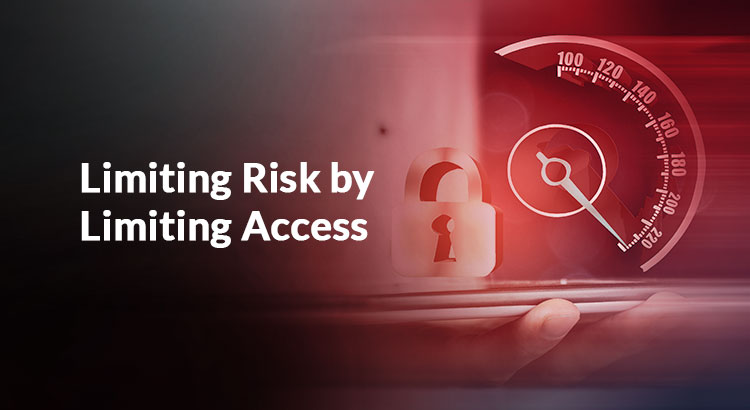The concept of the Least Privilege has been around since the 1900s. Hence, a cybersecurity enthusiast is probably already acquainted with it. However, most people usually have a bleak idea about the facet of Least Privilege Principle and the benefits of the Least Privilege Approach. Let’s read.
What is the Principle of Least Privilege?
To begin with the term “Principle of least privilege” or “Least Privilege Approach” convey a similar meaning. Thus, we might use either of them while going on about the topic.
It is the notion of information security, which offers a minimum level of access to a user. While working in such an environment, you will need to seek access permissions quite frequently. It is necessary to keep your network system away from the risk of phishing.
Like any other multifarious segment of cybersecurity, Least Privilege principle too, accompanies several foundational principles. The most notable amongst them are – integrity, confidentiality, and availability.
Therefore, you can implement it on both network systems as well as connected devices. This way, you can prevent the non-human applications from availing anything more than the requisite access.
Background of the Principle of Least Privilege
The background of Least Privilege Principle is somewhat unknown and obscure. However, the notion came to life during the 1970s with Jerome Saltzer, an American Computer Scientist. Later, Peter J. Denning offered a broader insight on the topic in his research paper.
Historically, the earliest touch of this principle was found in the Login C source code. It used to have a set of super-user permissions, which the system administrator could only access. Once they became unnecessary, the system dismissed them through a non-zero argument.
Privileged Elevation and Delegation Management (PEDM)
Watch All videos
How to Implement?
There have been several reports conducted on the subject of least privilege. Hence, the usage of the same has also changed quite methodically over the years. Currently, most organizations are implementing and using this system through the following methods –
- Location-based Access: The location-based access setting is pretty specific, as it can bound your employee to use a critical system from a particular location. For instance, you may use it on your organization’s database so that no one can use it when they aren’t in the office.
- Group-based Access: Managing user accesses for over a thousand employees can be somewhat tricky. However, this is where least privilege, or more specifically, an IAM tool, comes in. With this security program, you can offer user access based on an individual’s role or job. With this principle, it will be easier for you to remove someone’s accessing ability when they leave your organization.
- As-Needed Access: An organization may need specific data almost anytime. Nonetheless, if you have set up your least privilege principle manually, then accessing it would be troublesome. So, to avoid such issues, you will need to elevate your company’s privileges on an as-needed basis. This way, it will be easier for you to revert to the standard accounts without suffering any consequences.
- Machine-based Access: Most companies use this system as an alternative to location-based access. With it, you can make it possible for some selected machines to get all the classified information. If someone uses any other computer to perform the same task, they won’t find anything.
Lastly, you can also create single-use accessible accounts with the Least Privilege Approach. It is a much safer option, as you can use the passcode only a single time to access the data you need. If anyone wants to get the same information again, they will need to ask the administrator about a new password again.
What are the Benefits of the Least Privilege Approach?
Since the last decade, the prominence of cybercrime has increased massively. According to a report, almost 88% of organizations in the world have already experienced phishing attempts. Hence, using a single tool to bolster your system would not be enough. In addition to it, you will also need to implement at least one least privilege-based program. Here are the benefits you may get if you do so –
- With the Least Privilege Approach, you can shut the access of critical databases or systems almost exclusively. Therefore, in a way, it can offer better security, especially against human errors and other phishing attempts.
- If only a limited amount of people use a particular system, it will have a lower risk of attracting a malware program. Even if something malicious enters the environment, it will be contained in a specific area due to inaccessibility.
- By limiting malware infestation on your system, you can make it almost invulnerable to sudden crashes. Therefore, the whole work system will be much more stable and efficient. It can be pretty advantageous for you if your company owns a large chain of network structures.
- The principle of Least Privilege is usually implemented on an audited system. Therefore, the scope of performing an audit will minimize drastically for your organization. Moreover, you will not have to undergo various standard regulations if you use the Least Privilege Approach.
- Finally, by removing local administrator rights from your system, you can also minimize the helpdesk calls effectively. Additionally, if you enable as-needed access, you can also increase the productiveness of the users.
Conclusion
As mentioned before, almost every information security system is complicated and multi-faceted. Hence, if you don’t have extensive knowledge about it, make sure not to implement it alone. The same goes for the Least Privilege Approach as well. So, if you wish to include it in your security system, be sure to ask an expert. They will offer the best possible security objective.

